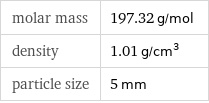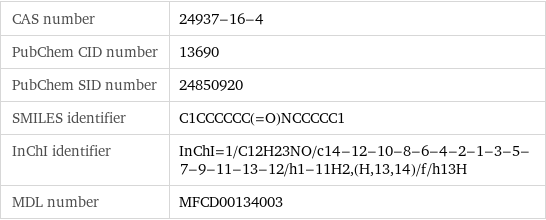Input interpretation

nylon 12
Chemical names and formulas

formula | (C_12H_23NO)_n Hill formula | C_12H_23NO name | nylon 12 IUPAC name | 1-azacyclotridecan-2-one alternate names | 1-azacyclotridecan-2-one | polylauryllactam mass fractions | C (carbon) 73% | H (hydrogen) 11.7% | N (nitrogen) 7.1% | O (oxygen) 8.11%
Lewis structure

Draw the Lewis structure of nylon 12. Start by drawing the overall structure of the molecule, ignoring potential double and triple bonds: Count the total valence electrons of the carbon (n_C, val = 4), hydrogen (n_H, val = 1), nitrogen (n_N, val = 5), and oxygen (n_O, val = 6) atoms: 12 n_C, val + 23 n_H, val + n_N, val + n_O, val = 82 Calculate the number of electrons needed to completely fill the valence shells for carbon (n_C, full = 8), hydrogen (n_H, full = 2), nitrogen (n_N, full = 8), and oxygen (n_O, full = 8): 12 n_C, full + 23 n_H, full + n_N, full + n_O, full = 158 Subtracting these two numbers shows that 158 - 82 = 76 bonding electrons are needed. Each bond has two electrons, so in addition to the 37 bonds already present in the diagram add 1 bond. To minimize formal charge oxygen wants 2 bonds and carbon wants 4 bonds. Identify the atoms that want additional bonds and the number of electrons remaining on each atom: Fill in the 1 bond by pairing electrons between adjacent highlighted atoms: Answer: | |
Basic properties

molar mass | 197.32 g/mol density | 1.01 g/cm^3 particle size | 5 mm
Chemical identifiers

CAS number | 24937-16-4 PubChem CID number | 13690 PubChem SID number | 24850920 SMILES identifier | C1CCCCCC(=O)NCCCCC1 InChI identifier | InChI=1/C12H23NO/c14-12-10-8-6-4-2-1-3-5-7-9-11-13-12/h1-11H2, (H, 13, 14)/f/h13H MDL number | MFCD00134003